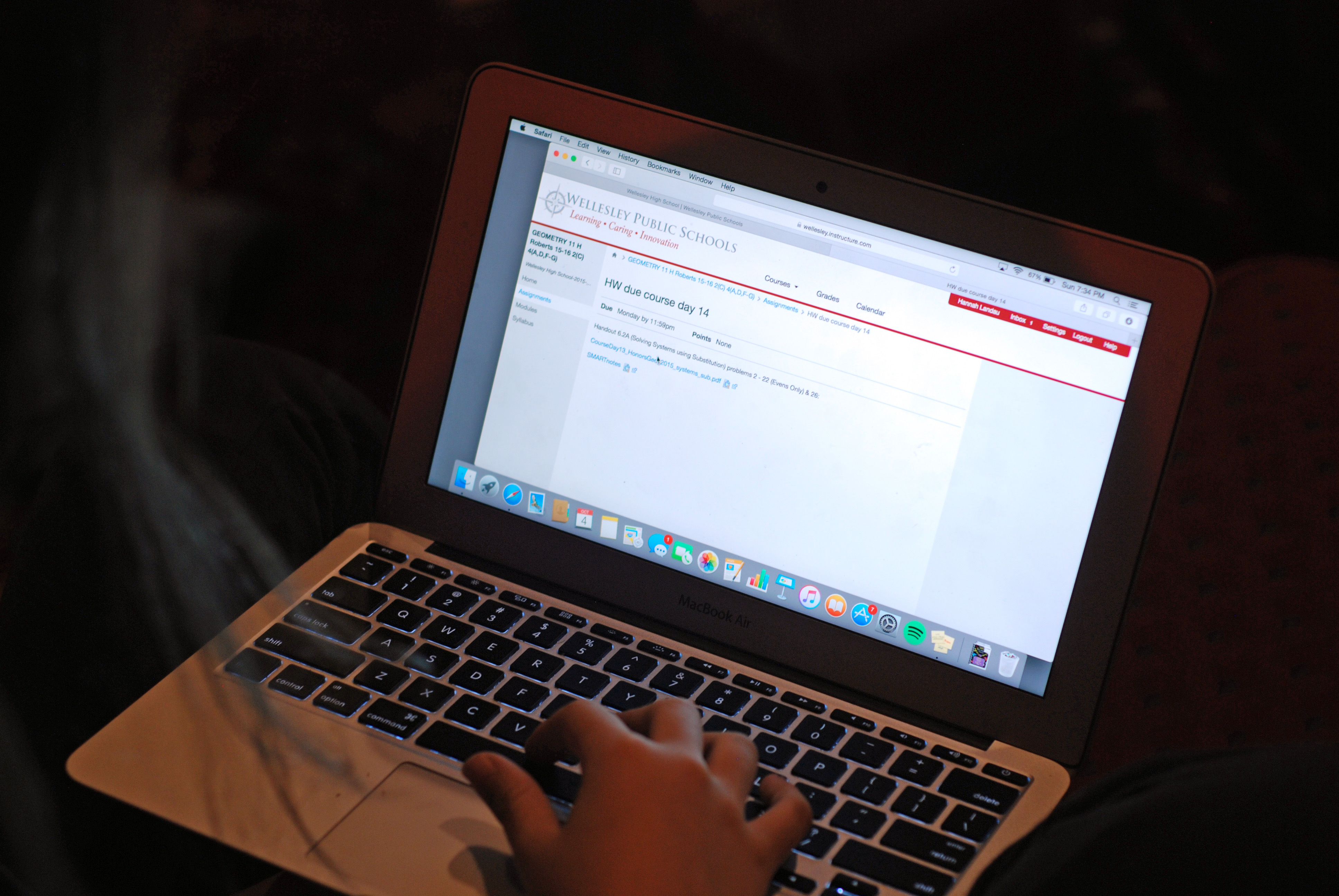For the first time in Wellesley history, teachers can use a “Learning Management System”, or “LMS”, called Canvas. This platform features an assignment calendar, discussion boards, announcements page, list of grades, quiz-making capabilities, file storage space, and other pages.
Although Ms. Ranjani Sriram, Instructional Technology specialist, estimates that only a third of trained teachers currently use Canvas, a poll conducted in the high school by The Bradford shows that out of forty students, only five do not use Canvas. In fact, many students claim that most of their classes use it.
Wellesley adopted the Canvas system as a facility for organization and resources. “Wellesley Public Schools did not have a learning management system at all, and teachers have been wanting one for years, just to house everything in one place,” said Sriram. “We in the Technology Department looked at several, and Canvas was the one we found to be the closest one to our needs, so teachers tested it out, and we decided to go with it.”
Furthermore, the addition of the Canvas system coincides with 2016’s Bring Your Own Device initiative, which calls for a laptop or tablet for each high school student. “We’ve been looking for the last two years and it just seemed like the right time, especially with the BYOD [Bring Your Own Device] initiative coming up,” said Sriram.
Some of the benefits of the Canvas system include pre-registration of all students. “Teachers see all of the classes that they see on Powerschool. If a student adds or drops a course on Powerschool, that reflects right away on Canvas. So when a teacher logs into Canvas, all of the students in their course are already registered; they don’t have to invite people, which has been a great benefit,” said Sriram.
Mr. Kyle Getz, who teaches AP Psychology and Discovering Psychology to seniors and uses Canvas actively for both, agrees. “I very much like the fact that all of the students have an account, and there’s no sign up process, it’s just log on with your Wellesley ID,” said Getz.
Other features have proven useful to both teachers and students: “The functions that people really love are the calendar feature. If all teachers started to use Canvas, that will become powerful, because in one calendar, they can see all of their subjects’ due dates listed. That will be a very helpful tool,” said Sriram. “People also love the ability to have discussions; that’s a feature a lot of teachers were looking for, threaded discussions, and Canvas allows that.”
This discussion feature sets itself apart especially because of its threaded format. “It has a phenomenal discussion board, which is really lacking with Google or other pieces of software out there. It’s very hard to find a good threaded discussion board as you would see if you were to use Reddit, for example,” said Getz.
Getz also likes the groups he and his students can make through Canvas. “I can magically arrange groups for students or students can sign up for groups on their own, and they can communicate back and forth to each other. I can see that communication, as opposed to if they use a Facebook group or something. I like having the accessibility of seeing a record,” said Getz.
No system is perfect, however, and one disadvantage of Canvas is its linear structure,. “Content comes up in a very linear fashion, one thing after another after another, and sometimes, the content that I want to use is circular or cyclical,” said Getz. “We’re trying to find the sweet spot of where to put certain types of assignments versus certain types of reference material, and really make sure that we don’t overload students.”
To Getz’s AP Psychology students, Canvas has been a struggle to use. “It is often very hard to find where certain assignments are located, and turning them in is even less straightforward. However, after some clicking it is possible to find where such assignments are located and submit them relatively easily,” said Juliet Scott ’16, who is taking Getz’s AP Psychology course.
Kurt Dean ’16, who is also taking AP Psychology with Getz, agrees. “If it were used for all classes, it would be better, because then everything could be properly organized on Canvas calendars and assignment lists. As it is, it is slightly more of a hassle than it is worth,” said Dean.
Getz acknowledges the challenge in transitioning systems for both teachers and students. “I think that teachers have to be receptive to the fact that there’s going to be a learning curve on their part, and that students are going to have the same learning curve,” said Getz.
Nevertheless, Getz would still consider Canvas a very useful tool. “I would definitely recommend it to anybody who’s interested in technology, as well as anybody who is particularly trying to make a course where students can also enrich themselves outside of the classroom.”
(Christie Yu ’18, Arts Editor)

